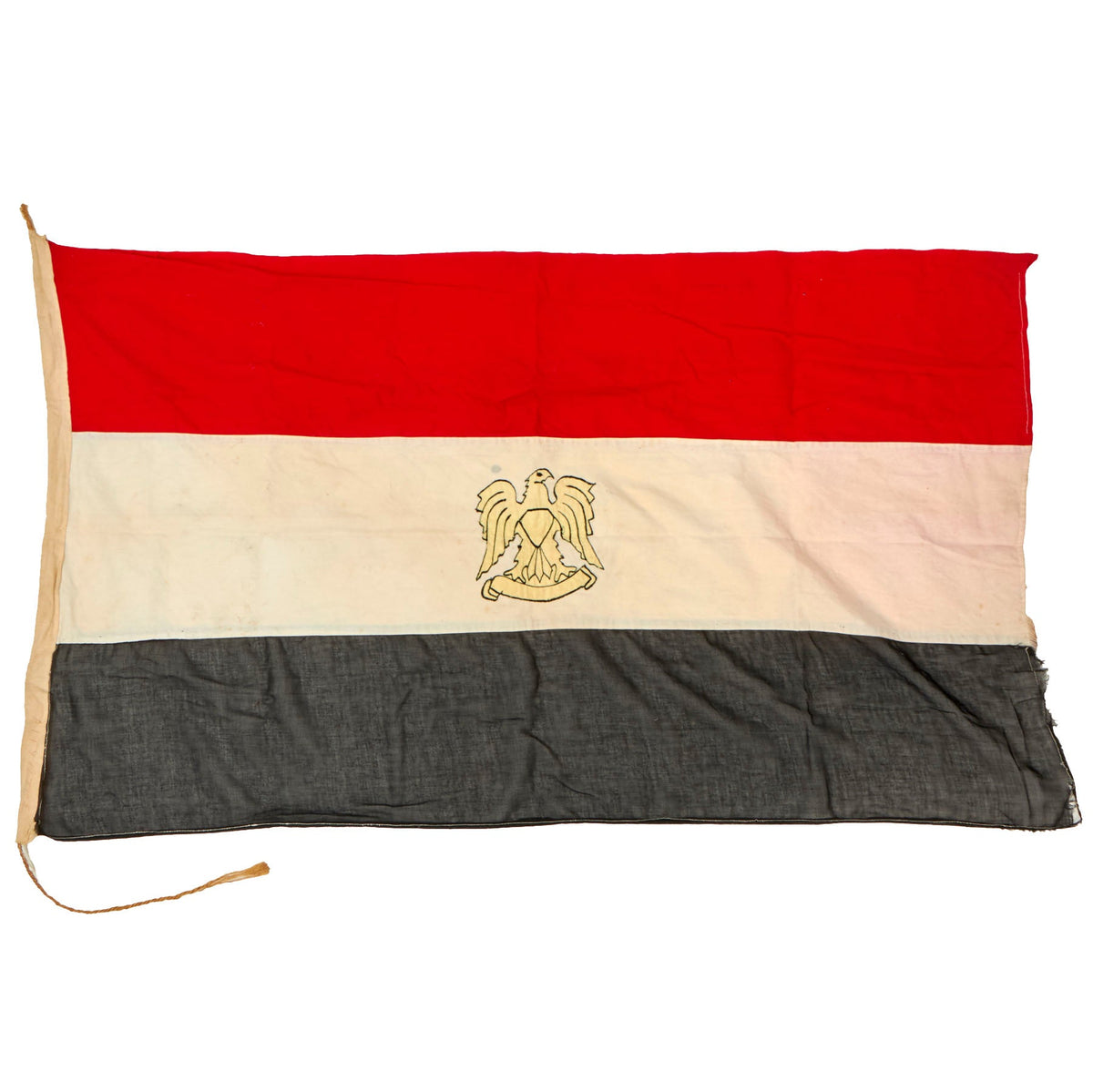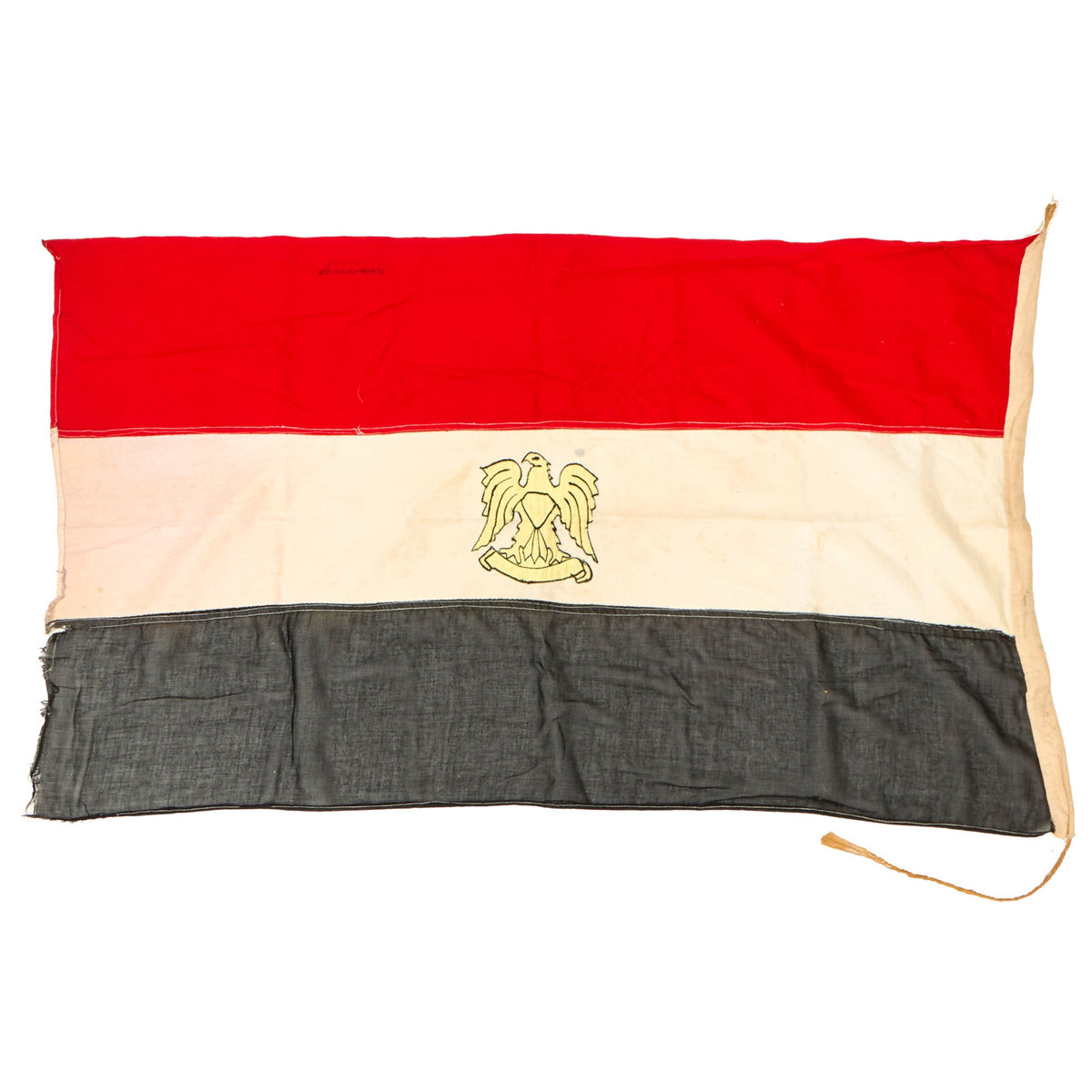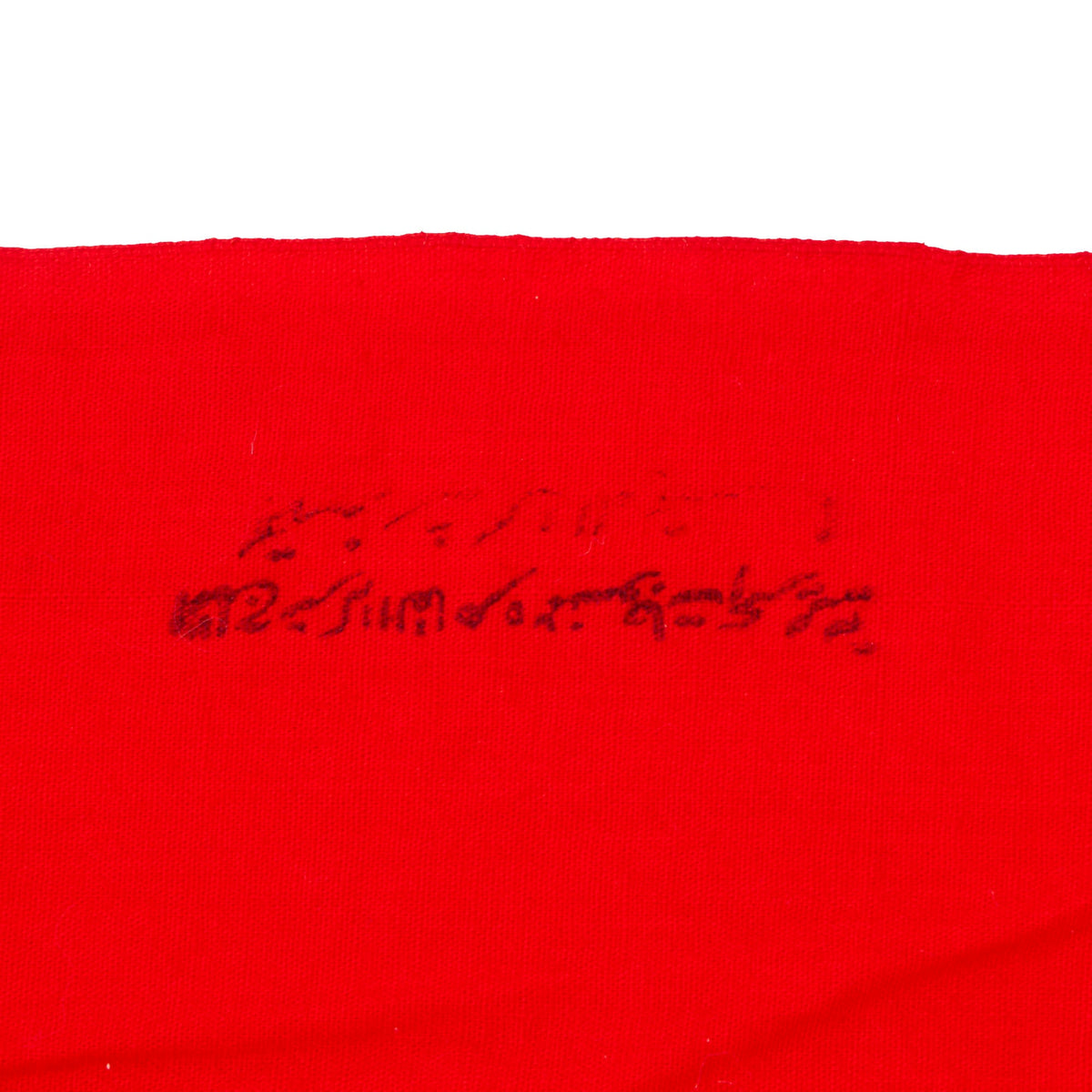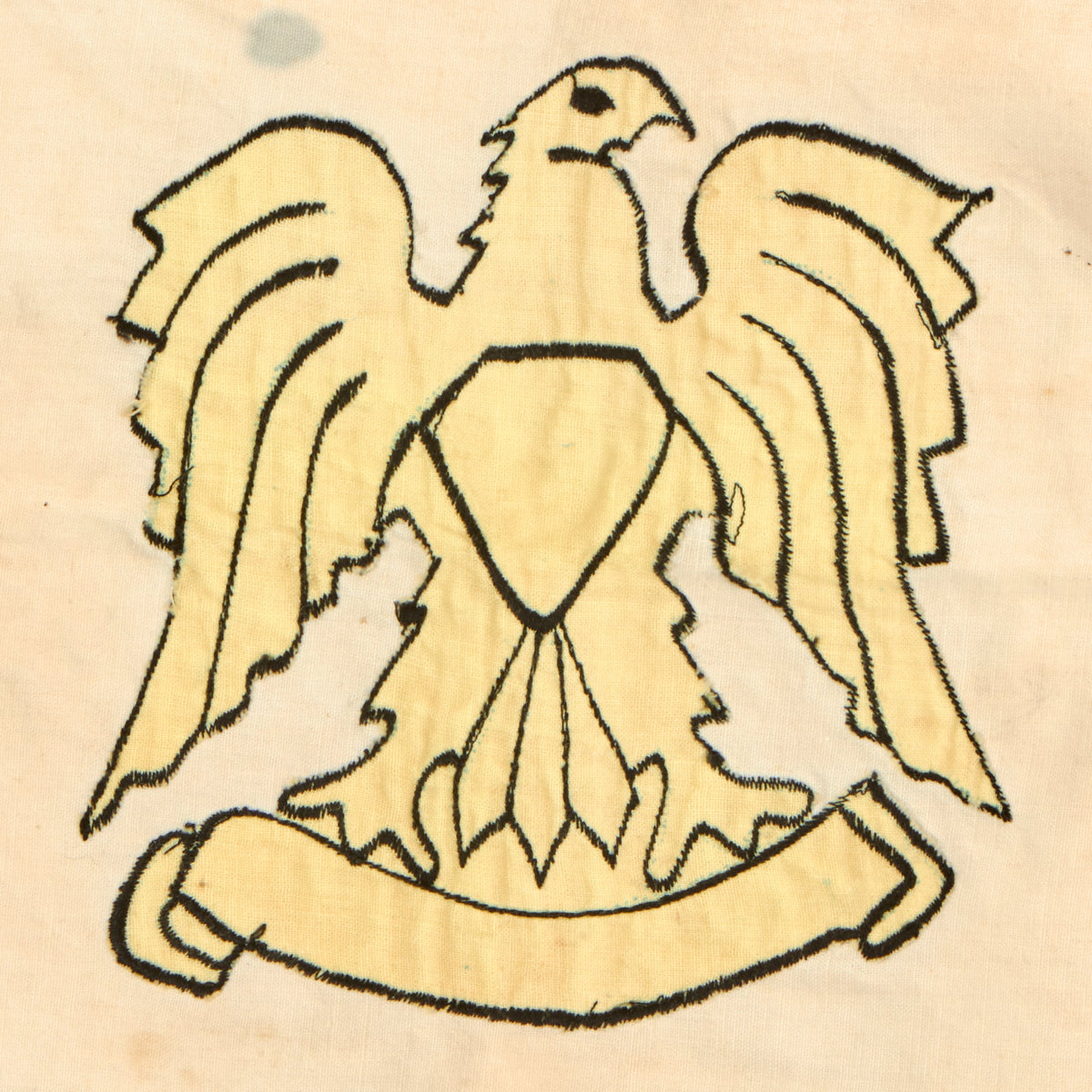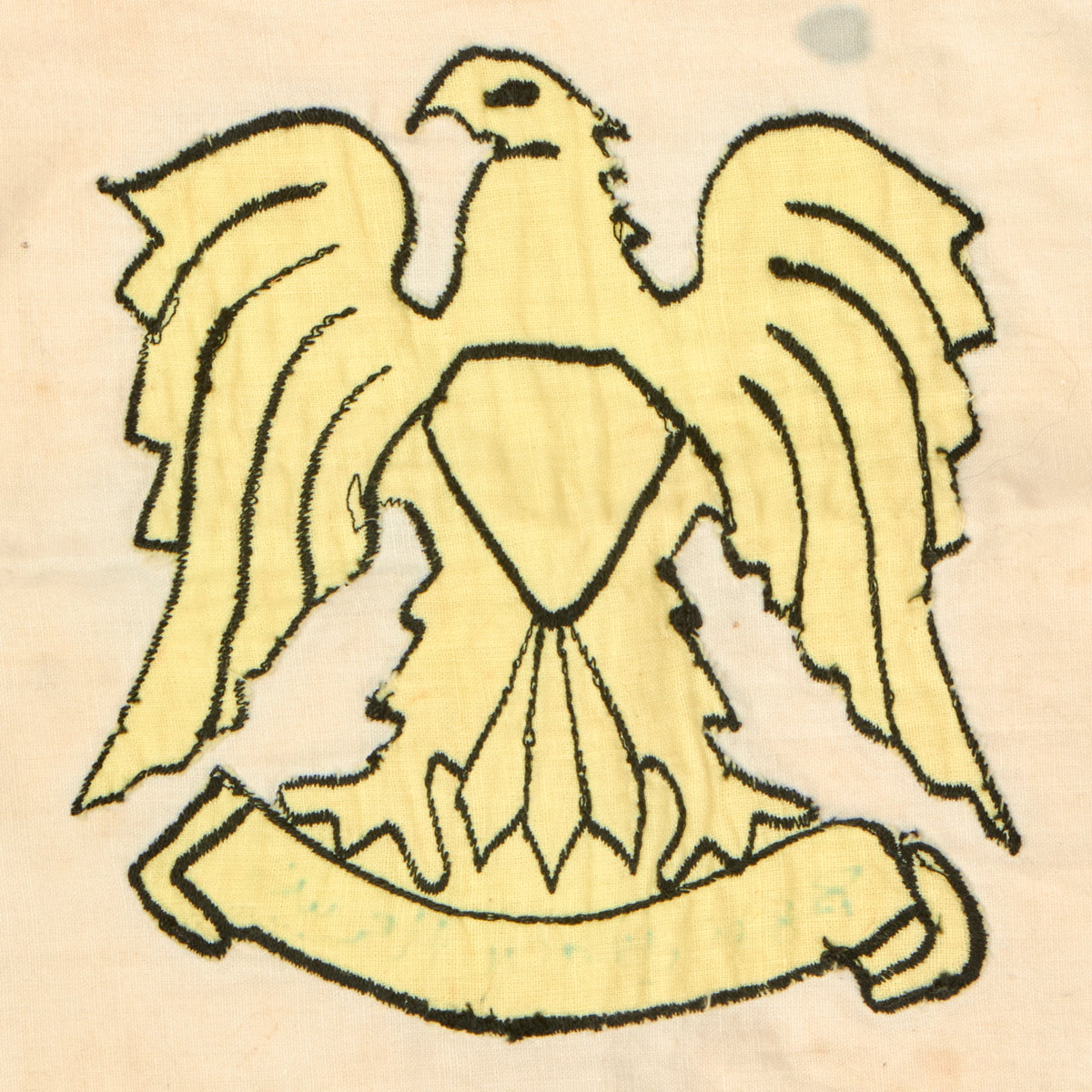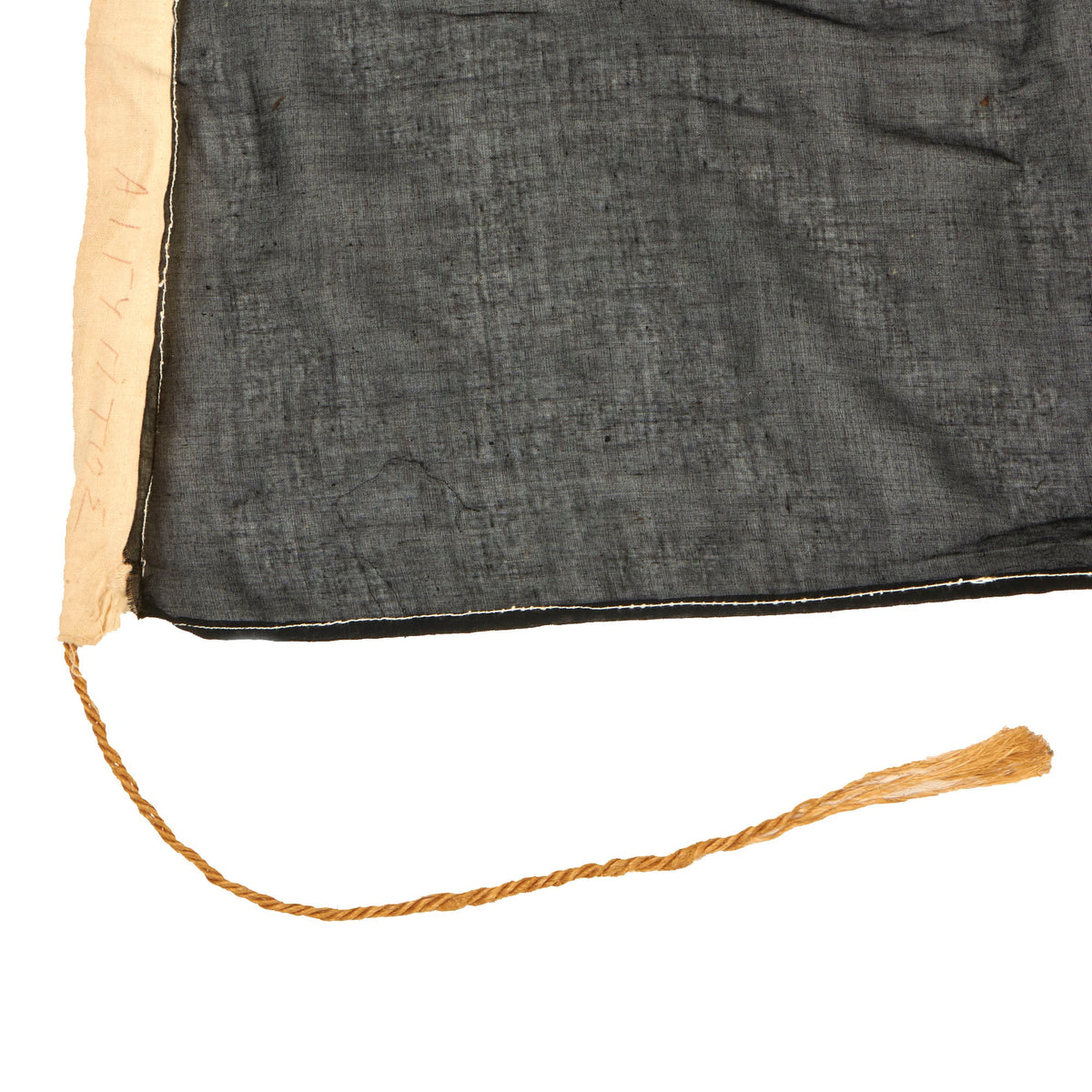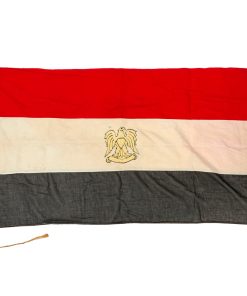Original Egyptian Six Day War Period Flag – 31 x 50” Original Items
$ 225,00 $ 90,00
Original Item. Only One Available. This is a fantastic example of an Egyptian National flag dating to the period of the Six-Day War. The flag features hand-sewn Egyptian eagles on both sides with a multi-piece fabric flag of white, red, and black. There is a stamp near the top in Egyptian, likely a maker’s mark or government marking. The rope halyard is still connected. Besides some basic staining and small tears, the flag is in great overall shape.
This is a great piece of Egyptian history, the first of its kind we have offered. Comes ready for further research and display!
Six-Day War (June 1967)
Fought between Israel and Arab neighbors Egypt, Jordan, and Syria. The nations of Iraq, Saudi Arabia, Kuwait, Algeria, and others also contributed troops and arms to the Arab forces. Following the war, the territory held by Israel expanded significantly (“The Purple Line”) : The West Bank (including East Jerusalem) from Jordan, Golan Heights from Syria, Sinai and Gaza from Egypt.
Relations between Israel and its Arab-majority neighboring states were not normalized after the First Arab–Israeli War ended with the signing of the 1949 Armistice Agreements. In 1956, Israel invaded Egypt, triggering the Suez Crisis; among Israel’s rationale for the invasion was its goal of forcing a reopening of the Straits of Tiran, which had been closed by Egypt for all Israeli shipping since 1950. Israel was eventually forced to withdraw its troops from Egyptian territory under international pressure, but was guaranteed that the Straits would remain open. A peacekeeping contingent known as the United Nations Emergency Force (UNEF) was subsequently deployed along the Egypt–Israel border, but there was no demilitarization agreement between the two sides.
In the months prior to the outbreak of the war in June 1967, tensions in the region became dangerously heightened. Israel reiterated its post-1956 position that another closure of the Straits of Tiran to Israeli shipping by Egypt would be a definite casus belli. In May, Egyptian president Gamal Abdel Nasser announced that the Straits of Tiran would again be closed to Israeli vessels, and subsequently mobilized the Egyptian military along the border with Israel, ejecting the UNEF. On 5 June, Israel launched a series of airstrikes against Egyptian airfields, initially claiming that it had been attacked by Egypt, but later stating that the airstrikes were pre-emptive; the question of which side caused the war remains one of a number of controversies relating to the conflict.
Egyptian forces were caught by surprise, and nearly the entire Egyptian Air Force was destroyed with few Israeli losses in the process, giving Israel the advantage of air supremacy. Simultaneously, the Israeli military launched a ground offensive into the Egyptian-occupied Gaza Strip and the Sinai Peninsula, which again caught the Egyptians by surprise. After some initial resistance, Nasser ordered an evacuation of the Sinai Peninsula. The Israelis continued to pursue and inflict heavy losses on the retreating Egyptian forces, and conquered the entire Sinai Peninsula by the sixth day of the war.
Jordan had entered into a defense pact with Egypt a week before the war began; the agreement envisaged that in the event of a war, Jordan would not take an offensive role, but would attempt to tie down Israeli forces to prevent them from making any significant territorial gains. Approximately an hour after the initial Israeli air attack, the Egyptian commander of the Jordanian military received orders from Cairo to mount attacks against Israel. In the initially confused situation, the Jordanians were falsely informed that Egypt had successfully repelled Israel’s air raids.
Egypt and Jordan agreed to a ceasefire on 8 June, and Syria agreed on 9 June; a ceasefire was signed with Israel on 11 June. In the aftermath of the war, Israel had crippled the entirety of the Egyptian, Syrian and Jordanian militaries. The war saw over 20,000 Arab troops killed while Israel lost fewer than 1,000 of its own. Israel’s sweeping success was the result of a well-prepared and enacted strategy combined with the poor military and political leadership and strategy of the Arab coalition. At the cessation of hostilities, Israel had seized the Golan Heights from Syria, the West Bank (including East Jerusalem) from Jordan, and the Gaza Strip as well as the entire Sinai Peninsula from Egypt. Israel’s international standing greatly improved in the years following the Six-Day War; the overwhelming Israeli victory had humiliated Egypt, Jordan, and Syria, and led Nasser to resign in shame. However, following widespread protests throughout Egypt against his resignation, he was later reinstated as president. The speed and ease of Israel’s victory would later lead to dangerous overconfidence within the ranks of the Israel Defense Forces—one of the primary factors that led to initial Arab successes in the 1973 Yom Kippur War, although that war also ended in an Israeli victory. The displacement of civilian populations as a result of the Six-Day War would have long-term consequences, as around 280,000 to 325,000 Palestinians and 100,000 Syrians fled or were expelled from the West Bank and the Golan Heights, respectively.
Fast Shipping with Professional Packaging
Thanks to our longstanding association with UPS FedEx DHL, and other major international carriers, we are able to provide a range of shipping options. Our warehouse staff is expertly trained and will wrap your products according to our exact and precise specifications. Prior to shipping, your goods will be thoroughly examined and securely secured. We ship to thousands clients each day across multiple countries. This shows how we're dedicated to be the largest retailer on the internet. Warehouses and distribution centres can be located throughout Europe as well as the USA.
Note: Orders with more than one item will be assigned a processing date depending on the item.
Before shipping before shipping, we'll conduct a thorough inspection of the items you have ordered. Today, the majority of orders will be delivered within 48 hours. The delivery time will be between 3-7 days.
Returns
The stock is dynamic and we cannot completely manage it because multiple stakeholders are involved, including our factory and warehouse. So the actual stock may alter at any time. It's possible that you may not receive your order once the order has been made.
Our policy is valid for a period of 30 days. If you don't receive the product within 30 days, we are not able to issue a refund or an exchange.
You can only return an item if it is unused and in the same state as the day you received it. You must have the item in its original packaging.
Related products
Uncategorized
Uncategorized
Uncategorized
Uncategorized
Uncategorized
Armoured Fighting Vehicles of the World: AFVs of World War One (Hardcover Book) New Made Items
Uncategorized
Uncategorized
Uncategorized
Australian WWII Owen MK1 Machine Carbine SMG Custom Fabricated Replica with Sling Original Items
Uncategorized
Uncategorized
Uncategorized
Uncategorized
Uncategorized
Uncategorized
Uncategorized
Uncategorized
Uncategorized
Uncategorized
Angolan Rebel 1970s era 60mm Inert Display Mortar from Angolan Civil War Original Items
Uncategorized
Armored Burgonet Helmet & Polearm from Scottish Castle Leith Hall Circa 1700 Original Items
